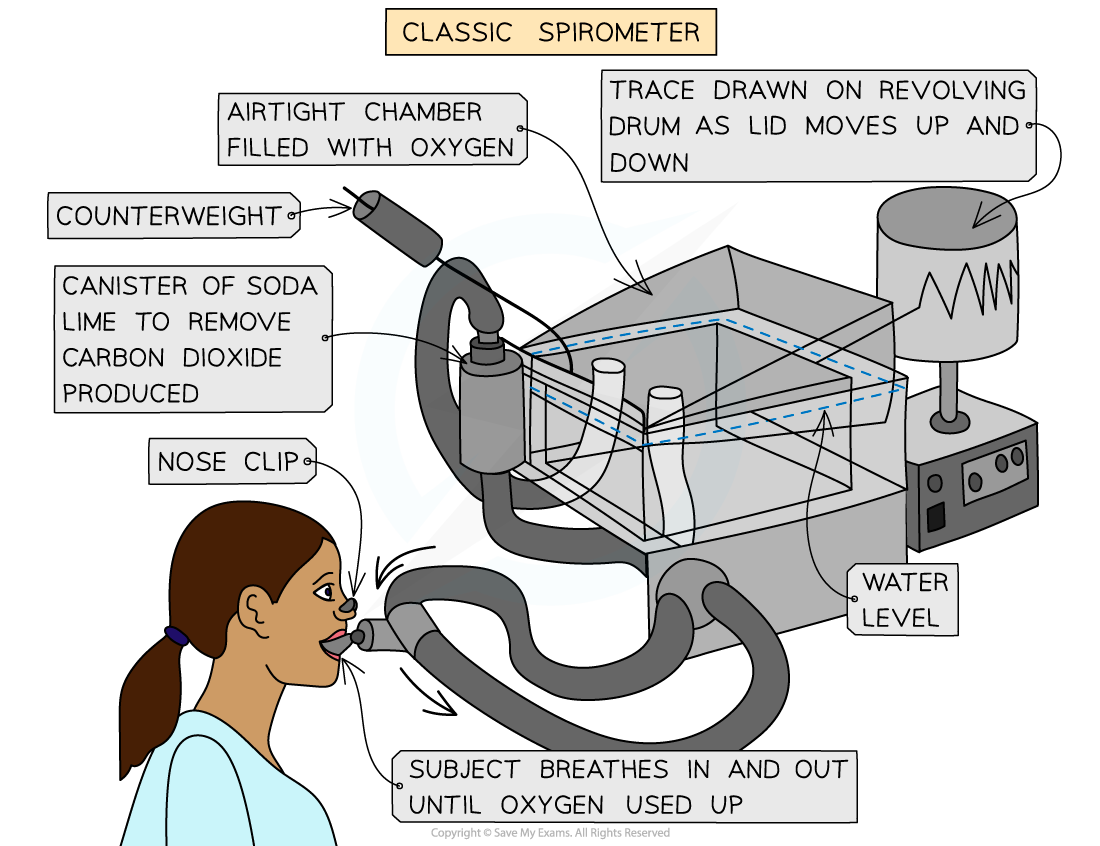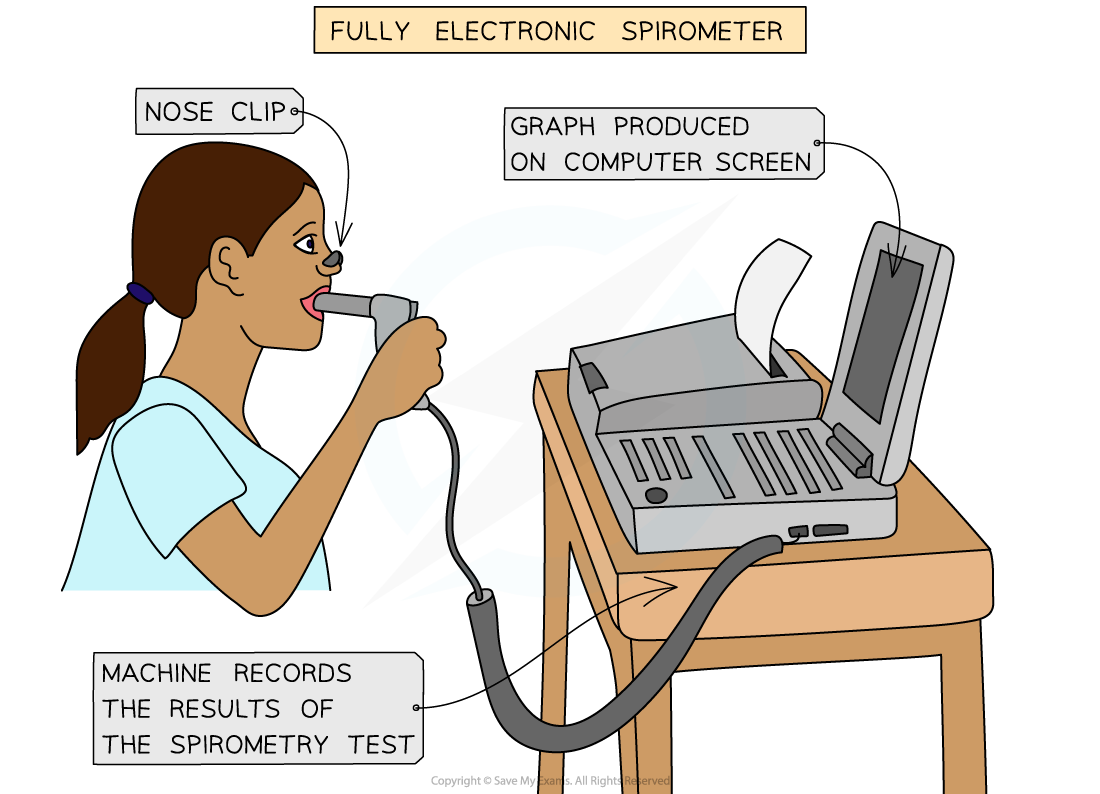- 翰林提供学术活动、国际课程、科研项目一站式留学背景提升服务!
- 400 888 0080
IB DP Biology: SL复习笔记6.4.4 Skills: Monitoring Ventilation
Practical 6: Monitoring Ventilation
- The volume of air within the lungs of an individual will change depending on their level of activity
- When at rest, breathing is shallow and slow
- When exercising, breathing is deeper and more frequent
- The volume of air breathed in and out during normal breathing is the tidal volume
- Normal breathing here refers to a breath that does not involve forced expiration
- The ventilation rate is the number of breaths taken per minute
- A piece of equipment called a spirometer can be used to create a trace to show the volume changes in the lungs
Practical 6: Monitoring of ventilation in humans at rest and after mild and vigorous exercise
- It is possible to investigate the effect of exercise on ventilation using the following variables
- Dependent variable: The ventilation parameter that is measured
- This could be the ventilation rate, the tidal volume, or a combination of both
- These measurements can be taken using a variety of methods, e.g. Basic observations such as counting breaths to measure ventilation rate
- A data logger such as an inflatable chest belt and pressure sensor to measure ventilation rate
- A spirometer can measure both ventilation rate and tidal volume
- Independent variable: The type or intensity of exercise
- The type of exercise could include a range from inactive e.g. lying down, to very active e.g. sprinting, and everything in between
- E.g. the intensity of the exercise could be measured by increasing speed on a treadmill
Apparatus
- Stop watch
- Inflatable chest belt and pressure sensor OR spirometer
Method: Using an inflatable chest belt
- Taking breathing measurements using an inflatable chest belt and pressure sensor
- The person (subject) being examined breathes in and out with a chest belt placed around the thorax, that has had air pumped into it
- As the subject breathes the pressure sensor logs the changes in pressure due to ventilation; the data logged can be viewed on a computer
- From the data collected, the rate of ventilation can be deduced
- The subject then repeats steps 1-4 after a period of exercise
- The type or intensity of exercise should be specified
- The subject then repeats step 5 several more times after exercise of different specified type or intensity e.g., gradually increasing in intensity
- A repeat of all measurements should be taken and several subjects should be tested in order to collect reliable results
Method: Using a spirometer
- Taking breathing measurements using a spirometer
- The subject being examined breathes in and out through the spirometer after a period of rest
- As the subject breathes through the spirometer, a trace is drawn on a rotating drum of paper, or a graph is formed digitally which can be viewed on a computer
- From this trace, the subject’s tidal volume and breathing rate can all be calculated
- The person then completes steps 1-4 after a period of exercise
- The type or intensity of exercise should be specified
- The subject then repeats step 5 several more times after exercise of different specified type or intensity e.g., gradually increasing in intensity
- A repeat of all measurements should be taken and several subjects should be tested in order to collect reliable results


Using a spirometer to monitor ventilation
Analysis
- The effect of exercise on ventilation can be seen in the spirometer trace below
- Exercise can be seen to increase the rate of ventilation resulting in more breaths taken per minute
- It is also evident that after exercise the tidal volume of the person has increased, which means more air is breathed in and out in each breath
- After exercise, both tidal volume and ventilation rate eventually return to resting values
转载自savemyexams

早鸟钜惠!翰林2025暑期班课上线

最新发布
© 2025. All Rights Reserved. 沪ICP备2023009024号-1








